Search Thermo Fisher Scientific
图: 1 / 7
APP (Amyloid Precursor Protein) Antibody (13-9749-82) in ICC/IF

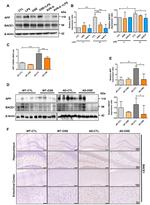
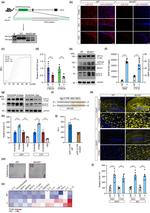
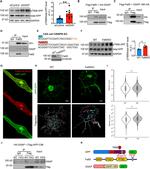
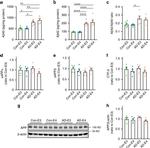
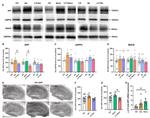
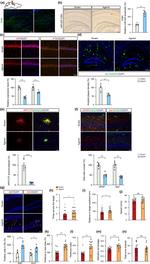
产品信息
13-9749-82
种属反应
已发表种属
宿主/亚型
分类
类型
克隆号
偶联物
形式
浓度
纯化类型
保存液
内含物
保存条件
运输条件
RRID
产品详细信息
Description: The monoclonal antibody 22C11 recognizes human, mouse, and rat APP (Amyloid Precursor Protein). APP is expressed in high abundance in the central nervous system and has three major isoforms resulting from alternative splicing. APP plays a role in synaptic formation and repair, anterograde neuronal transport, iron export, and hormonal regulation. Secreted APP (sAPP) may have neuroprotective effects against neurotoxic insult, oxidative stress, and excitotoxicity. APP belongs to a family that contains at least two homologs, amyloid precursor-like proteins 1 and 2 (APLP1 and APLP2). Similarities between APP and APLP, especially APLP2, suggest that APLP could share and compensate for the function of APP. Proteolytic cleavage of APP results in the generation of beta amyloid, which is the primary component of senile plaques. Senile plaques are one of the major histopathologic features of Alzheimer's disease. Abnormal regulation and processing of APP also plays a role in Down's syndrome, early onset familial Alzheimer's disease, cerebral hemorrhage, and arthritis.
This 22C11 antibody reacts with pre-A4 and recognizes all three isoforms of APP (immature, sAPP, and mature). This 22C11 antibody is known to cross react with APLP2.
Applications Reported: This 22C11 antibody has been reported for use in microscopy, and immunocytochemistry.
Applications Tested: This 22C11 antibody has been tested by immunocytochemistry of methanol-fixed cells and can be used at less than or equal to 5 µg/mL. It is recommended that the antibody be carefully titrated for optimal performance in the assay of interest.
Filtration: 0.2 µm post-manufacturing filtered.
靶标信息
Amyloid Precursor Protein (APP) or Amyloid beta precursor protein functions as a cell surface kinesin I membrane receptor, mediating the axonal transport of beta-secretase and presenilin 1. APP is important for neurite growth, neuronal adhesion and axonogenesis. APP is a 100-140 kDa transmembrane glycoprotein that exists as several isoforms resulting from alternative splicing. Proteolytic cleavage of APP by beta- and gamma-secretases results in the generation of beta amyloid, which is the primary component of senile plaques. Senile plaques are one of the major histopathologic features of Alzheimer's disease. Abnormal regulation and processing of APP also plays a role in Down's syndrome, early onset familial Alzheimer's disease, and cerebral hemorrhage.
仅用于科研。不用于诊断过程。未经明确授权不得转售。
生物信息学
蛋白别名: ABPP; AG; Alzheimer disease amyloid A4 protein homolog; Alzheimer disease amyloid protein; amyloid A4; Amyloid b precursor protein; amyloid beta (A4) precursor protein; amyloid beta A4 protein; Amyloid precursor protein; Amyloid β precursor protein; Amyloid-beta (A4) precursor protein; Amyloid-beta A4 protein; Amyloid-beta precursor protein; Amyloidogenic glycoprotein; APP; APPI; appican; beta-amyloid peptide; beta-amyloid peptide(1-40); beta-amyloid peptide(1-42); beta-amyloid precursor protein; Cerebral vascular amyloid peptide; CVAP; Pan-Abeta; peptidase nexin-II; PN-II; PreA4; protease nexin II; Protease nexin-II; testicular tissue protein Li 2
基因别名: A4; AAA; ABETA; ABPP; AD1; Adap; Ag; APP; APPI; betaApp; CTFgamma; CVAP; E030013M08Rik; PN-II; PN2
UniProt ID: (Human) P05067, (Rat) P08592, (Mouse) P12023
Entrez Gene ID: (Human) 351, (Rat) 54226, (Mouse) 11820



